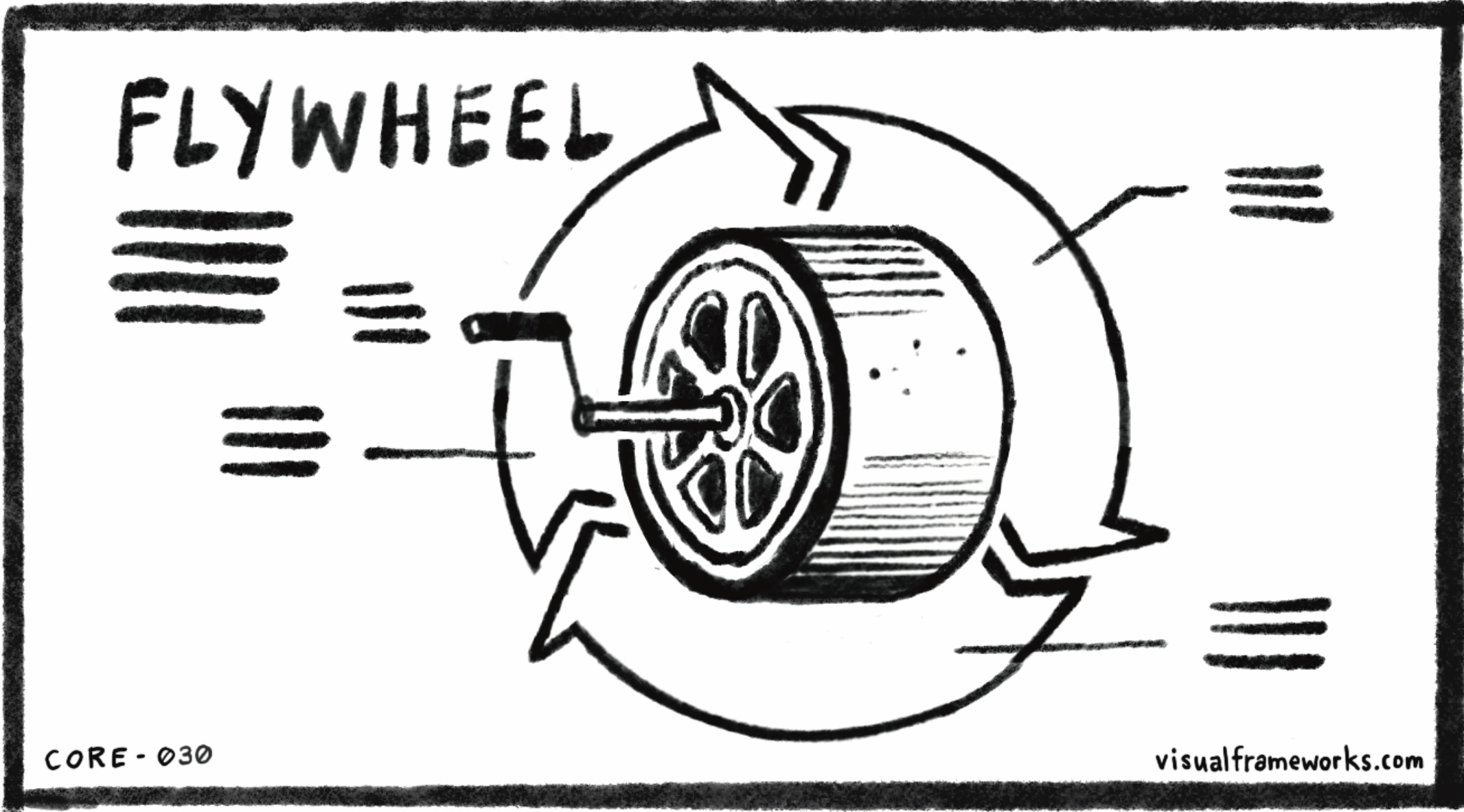A flywheel is a simple machine that stores angular momentum as energy. The first flywheels were probably potter’s wheels. One property of a flywheel is the tremendous amount of momentum it can reach over time. When a large, heavy flywheel is stationary, it takes a lot of energy to get it to budge, but as it starts rotating faster, it gains more power and its own momentum keeps it going.
The flywheel gained business popularity when Jim Collins coined the term “flywheel effect,” which he described as follows: “There is no single action that creates momentum. Instead, as you consistently push in a single direction over time, you’ll begin to benefit from the power of compounding results. And it’s this momentum that causes what eventually appears, from the outside, to be an overnight success.”
Amazon’s flywheel is a core element of its business strategy: a whole set of different activities create small “nudges” to the flywheel, but these small actions build great momentum over time. Customers who join Prime get more benefits which makes them more loyal, so they recommend the company and they also but more. A lower cost structure allows Amazon to charge lower prices, which drives more purchases. As more people sell on the platform, it becomes more attractive to buyers.
Can you find a way to create a flywheel effect in your life or work? What kinds of small things can you do to create momentum over time? What can you do that has a “multiplying effect” on your other activities?
See also: Cycle, Virtuous cycle, Doom loop, Escape velocity, Pendulum, Momentum, Snowball effect.
CORE-030
